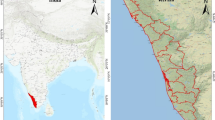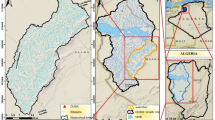Abstract
Forest fires cause a lot of damage in Turkey, due to the geographical location, high temperatures, and low humidity levels. Accurate determination of burned forest areas is crucial for correct damage assessment studies, fire risk calculations, and review of the forest regeneration processes. In this study, we compare the performances of unsupervised classification methods (which have not been used to map burned areas before) of burned area extraction from medium resolution satellite images with K-means. In this regard, the areas affected by fire in the Kumluca and Adrasan regions in 2016, Alanya and Gümüldür regions in 2017 and Athens region in 2018 are determined using Landsat 8 images. For this purpose, Canopy, M-tree, a hierarchical clustering algorithm, and a learning vector quantization which are frequently used in the literature are applied to determine the burned area, and the results obtained are compared with the results obtained from K-means. The results show that unsupervised classification methods can be used to map burned areas. The hierarchical clustering and K-means algorithms provide the most accurate results in mapping burned areas in most of the regions used in the study.










Similar content being viewed by others
References
Benz UC, Hofmann P, Willhauck G, Lingenfelder I, Heynen M (2004) Multi-resolution, object-oriented fuzzy analysis of remote sensing data for GIS-ready information. ISPRS J Photogramm Remote Sens 58:239–258
Camia A, Libertá G, San-Miguel-Ayanz J (2017) Modeling the impacts of climate change on forest fire danger in Europe. EU JRC Tech Rep, pp 1-22
Celik T (2009) Unsupervised change detection in satellite images using principal component analysis and $ k $-means clustering. IEEE Geosci Remote Sens Lett 6:772–776
Chen W, Moriya K, Sakai T, Koyama L, Cao C (2016) Mapping a burned forest area from Landsat TM data by multiple methods. Geom Nat Haz Risk 7:384–402
Chuvieco E (2009) Earth observation of wildland fires in Mediterranean ecosystems. Springer, Dordrecht, pp 129–148
Ciaccia P, Patella M, Zezula P (1997) M-tree: an efficient access method for similarity search in metric spaces. In: Proceedings of the 23rd VLDB conference, Athens, Greece, pp 426–435
Çömert R, Matcı DK, Emir H, Avdan U (2017) Nesne Tabanlı Sınıflandırma ile Yanmış Orman Alanlarının Tespiti Afyon Kocatepe Üniversitesi Fen Ve Mühendislik Bilimleri Dergisi 17:27–34
Congalton RG, Green K (2008) Assessing the accuracy of remotely sensed data: principles and practices. CRC press, Boca Raton
Dai W, Yu C, Jiang Z (2016) An improved hybrid canopy-fuzzy C-means clustering algorithm based on apReduce model. J Comput Sci Eng 10:1–8
Earth G (2018) Google Earth. https://earth.google.com/web/@39.08764278,35.17776244,1254.97487337a,2309683.10527162d,35y,0h,0t,0r/data=ChMaEQoJL20vMDF6bmNfGAIgASgC. Accessed 16.8.2019 2019
Fernández-Manso A, Quintano C (2015) Evaluating Landsat ETM+ emissivity-enhanced spectral indices for burn severity discrimination in Mediterranean forest ecosystems. Remote Sens Lett 6:302–310
Fox D, Laaroussi Y, Malkinson L, Maselli F, Andrieu J, Bottai L, Wittenberg L (2016) POSTFIRE: a model to map forest fire burn scar and estimate runoff and soil erosion risks. Remote Sensing Applications: Society and Environment 4:83–91
Gitas I, Devereux B (2006) The role of topographic correction in mapping recently burned Mediterranean forest areas from LANDSAT TM images. Int J Remote Sens 27:41–54
Guha S, Govil H, Dey A, Gill N (2018) Analytical study of land surface temperature with NDVI and NDBI using Landsat 8 OLI and TIRS data in Florence and Naples city, Italy. European Journal of Remote Sensing 51:667–678
Guru D, Vasudev T, Chethan H, Kumar YS (2018) Proceedings of international conference on cognition and recognition. https://doi.org/10.1007/978-981-10-5146-3
Hawbaker TJ et al (2017) Mapping burned areas using dense time-series of Landsat data. Remote Sens Environ 198:504–522
Hudak A, Brockett B (2004) Mapping fire scars in a southern African savannah using Landsat imagery. Int J Remote Sens 25:3231–3243
Jarchow CJ, Nagler PL, Glenn EP (2017) Greenup and evapotranspiration following the minute 319 pulse flow to Mexico: an analysis using Landsat 8 normalized difference vegetation index (NDVI) data. Ecol Eng 106:776–783
Johnson SC (1967) Hierarchical clustering schemes. Psychometrika 32:241–254
Kanungo T, Mount DM, Netanyahu NS, Piatko CD, Silverman R, Wu AY (2002) An efficient k-means clustering algorithm: analysis and implementation. IEEE Trans Pattern Anal Mach Intell 24:881–892
Kohonen T, Kangas J, Laaksonen J, Torkkola K (1992) LVQ PAK: a software package for the correct application of learning vector quantization algorithms. In: Proc. IJCNN, Vol. 92, pp 725–730
Koonsanit K, Jaruskulchai C, Eiumnoh A (2012) Parameter-free K-means clustering algorithm for satellite imagery application. In: 2012 International Conference on Information Science and Applications. IEEE, pp 1–6
Kriegel H-P, Schubert E, Zimek A (2017) The (black) art of runtime evaluation: are we comparing algorithms or implementations? Knowl Inf Syst 52:341–378
Kumar A, Kiran M, Prathap B (2013) Verification and validation of mapreduce program model for parallel k-means algorithm on hadoop cluster. In: 2013 Fourth International Conference on Computing, Communications and Networking Technologies (ICCCNT). IEEE, pp 1–8
KumlucaBelediyesi (2019) COĞRAFYA. http://www.kumluca-bld.gov.tr/19/COGRAFYA.html. Accessed 26.8.2019 2019
Kwon Y, Lee H, Lee H (2018) Implication of the cluster analysis using greenhouse gas emissions of Asian countries to climate change mitigation. Mitig Adapt Strateg Glob Chang 23:1225–1249
Leckie DG, Walsworth N, Dechka J, Wulder M (2002) An investigation of two date unsupervised classification in the context of a national program for Landsat based forest change mapping. In: IEEE International Geoscience and Remote Sensing Symposium. IEEE, Vol. 3, pp 1307–1311
Lillesand T, Kiefer RW, Chipman J (2014) Remote sensing and image interpretation. John Wiley & Sons, Hoboken
Liu JG, Mason PJ (2013) Essential image processing and GIS for remote sensing. John Wiley & Sons, Hoboken
Long T et al (2019) 30 m resolution global annual burned area mapping based on Landsat images and Google Earth engine. Remote Sens 11:489
Mallinis G, Koutsias N (2012) Comparing ten classification methods for burned area mapping in a Mediterranean environment using Landsat TM satellite data. Int J Remote Sens 33:4408–4433
Matcı DK, Avdan U (2019) Optimization of remote sensing image attributes to improve classification accuracy. International Journal of Environment and Geoinformatics 6:50–56
McCallum A, Nigam K, Ungar LH (2000) Efficient clustering of high-dimensional data sets with application to reference matching. In: Proceedings of the sixth ACM SIGKDD international conference on Knowledge discovery and data mining, pp 169–178
Mihaescu MC, Burdescu DD (2012) Using m tree data structure as unsupervised classification method. Informatica 36(2)
Miller JD, Yool SR (2002) Mapping forest post-fire canopy consumption in several overstory types using multi-temporal Landsat TM and ETM data. Remote Sens Environ 82:481–496
OGM (2017) Orman İstatistikleri. Yayın
Polychronaki A, Gitas IZ (2012) Burned area mapping in Greece using SPOT-4 HRVIR images and object-based image analysis. Remote Sens 4:424–438
Rogan J, Yool S (2001) Mapping fire-induced vegetation depletion in the Peloncillo Mountains, Arizona and New Mexico. Int J Remote Sens 22:3101–3121
Roux M (2015) A comparative study of divisive hierarchical clustering algorithms. arXiv preprint arXiv:1506.08977
Sedano F, Kempeneers P, San Miguel J, Strobl P, Vogt P (2013) Towards a pan-European burnt scar mapping methodology based on single date medium resolution optical remote sensing data. Int J Appl Earth Obs Geoinf 20:52–59
Tucker CJ, Townshend JRG, Goff TE (1985) African land-cover classification using satellite data. Science 227:369–375
Usman B (2013) Satellite imagery land cover classification using k-means clustering algorithm computer vision for environmental information extraction. Elixir Computer Science and Engineering 63:18671–18675
Acknowledgements
This study was produced from a PHD thesis conducted by Dilek Küçük Matcı under the supervision of Assoc. Prof Uğur Avdan.
Author information
Authors and Affiliations
Corresponding author
Additional information
Responsible Editor: Biswajeet Pradhan
Rights and permissions
About this article
Cite this article
Küçük Matcı, D., Avdan, U. Comparative analysis of unsupervised classification methods for mapping burned forest areas. Arab J Geosci 13, 711 (2020). https://doi.org/10.1007/s12517-020-05670-7
Received:
Accepted:
Published:
DOI: https://doi.org/10.1007/s12517-020-05670-7




